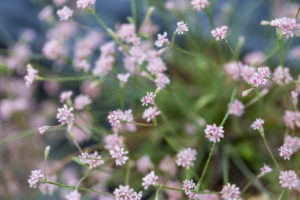Mount Diablo’s densely vegetated landscape resembles a moonscape these days, following the four days of intense wildfire that engulfed 3,100 acres of land.
A charred scar running along the south face of one of the Bay Area’s iconic mountains attests to the sheer destruction of the Morgan fire. It’s hard to imagine that anything has survived.
As Mount Diablo State Park reopens to visitors this week, the post- fire question remains: how has nature fared amidst the flames?
“Mount Diablo is a biological diversity hotspot with dozens of rare and endangered species,” said Seth Adams, lands program director for Save Mount Diablo. “When you’re an endangered species the loss of 3,000 acres of habitat is dramatic.”
Mount Diablo is one of the East Bay’s biodiversity hotspots. Home to 253 vertebrate animal species and 900 plant species — of which three- quarters are native — a fire of this intensity is worrying at best.
While larger species such as deer and mountain lion can most easily flee danger, smaller and threatened species such as the California red- legged frog and Alameda whipsnake have naturalists concerned.
“If you’re an Alameda whipsnake you’re pretty fast and you may be able to get out of the way,” said Adams. “But you’re definitely going to lose species diversity from the loss of individuals.”
The wrentit is one such species. These small brown birds with their ping-ponging calls nest in the same area of chaparral their entire lives. Unable to fly long distances, Mount Diablo’s wrentit population is unlikely to prosper from the fire in the short term.
“If you’re a wrentit and you’ve spent your entire life in a few hundred square feet of chaparral its going to be a big impact on your population,” said Adams. “But I’m hoping that the regeneration of the chaparral will offer them more diverse kinds of habitat and in the long term, that will be really positive.”

Given Mount Diablo State Park is part of a 110,000-acre open space complex and adjacent to preserves with similar habitat, it is unlikely any fauna species will be completely lost. According to Adams, the impact of the fire on biodiversity may have been worse, had this network not existed.
“If we weren’t successful in connecting various parks and habitats we would be in a much more dire situation,” he said.
Although images of large flames and plumes of smoke rising from the top of the 3,848- foot mountain haunt the minds of many, including those evacuated from their homes in nearby Clayton, such a forest fire was perhaps overdue. Mount Diablo last burned in 1977, some 36 years ago, and according to Adams, that frequency is about right for forest fires.
“If you have fires too frequently, you can get dead chaparral habitat replaced by exotic, invasive species,” he said. “At the same time, I think it would have been less damaging had there been the resources to do controlled burns so that more of a mosaic had been hit rather than a solid three thousand acres.”
Save Mount Diablo’s 165-acre Viera- North Peak parcel is part of the south face that burnt in the fire. This habitat is home to over 50 rare species many of which are not fire adapted, said Adams.
“In some areas, the fire burned so hot that it’s the equivalent of weeding and literally sterilized the soil. There could be big bald areas for years.”

Cal Fire authorities recently confirmed that the Morgan fire — which broke out in early September along Morgan Territory Road — was ignited by target shooting. Of the 100 nearby homes threatened, none were destroyed in the fire.
With summer winding down and suggestions of rain forecasted as soon as next week, Mount Diablo Supervising Ranger Dan Stefanisko said erosion is a major concern.
“Fire crews are working with our environmental scientists, determining which areas are most vulnerable,” said Stefanisko. “In areas that are really steep they’re putting in wattles [straw wrapped in burlap that degrades over time] that will slow the water flow.”
But amidst the ash there is a silver — or potentially more colorful — lining. Come spring, much of the charred land will be covered in the orange and yellow hues of wildflowers, many of which are fire dependent and have not been seen since Diablo’s last forest fire.
“After the first rain we’ll start to see some things take a hold,” said Stefanisko. “There’s probably going to be a lot of wildflowers in that area as opposed to all the chaparral.”
Forest fires play an important role, particularly in chaparral habitats as they clear dense brush and in the long term, promote further diversity among plant species.
“In terms of the long term ecological health of the mountain, the areas concerned are fire adaptive and this will actually make that area more ecologically healthy,” said Adams.

Since the park’s reopening, Stefanisko has seen a fair number of hikers and bikers come through, some perhaps curious to see the fire’s aftermath and others simply craving the 360-degree views that come with the East Bay’s tallest peak.
“It’s sort of saddening and exciting at the same time,” said Seth Adams. “This is hopefully a once- in-a-generation event and now we get to witness the rebirth of a whole area of Mount Diablo.”
Alessandra Bergamin is a Bay Nature editorial intern.





